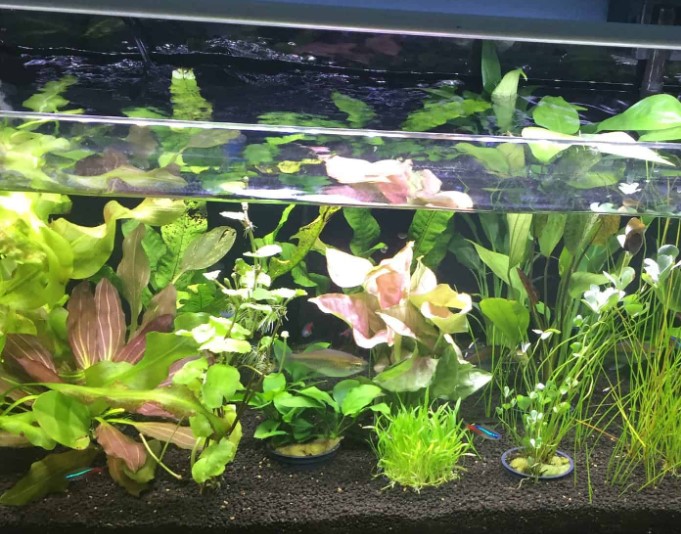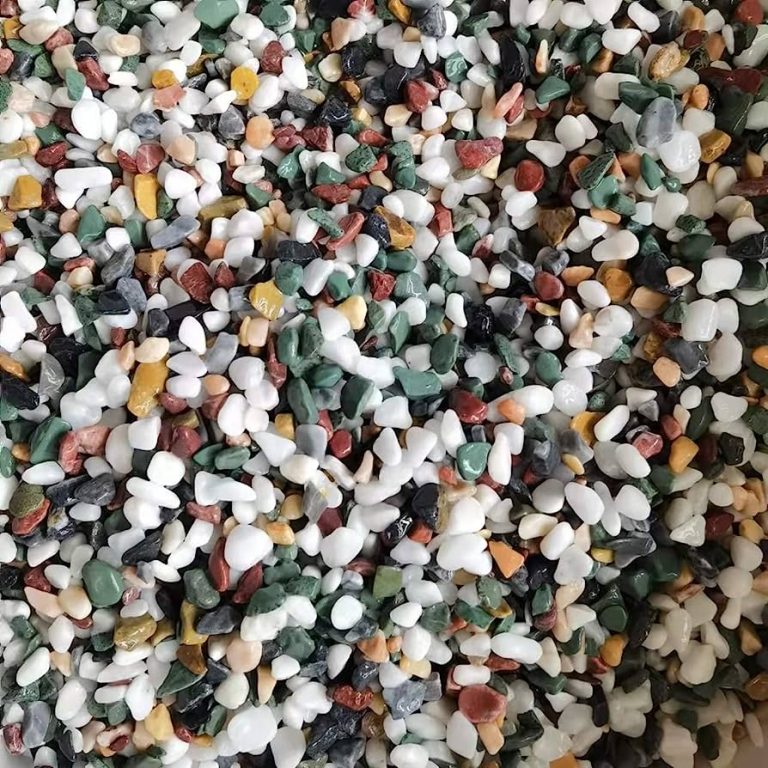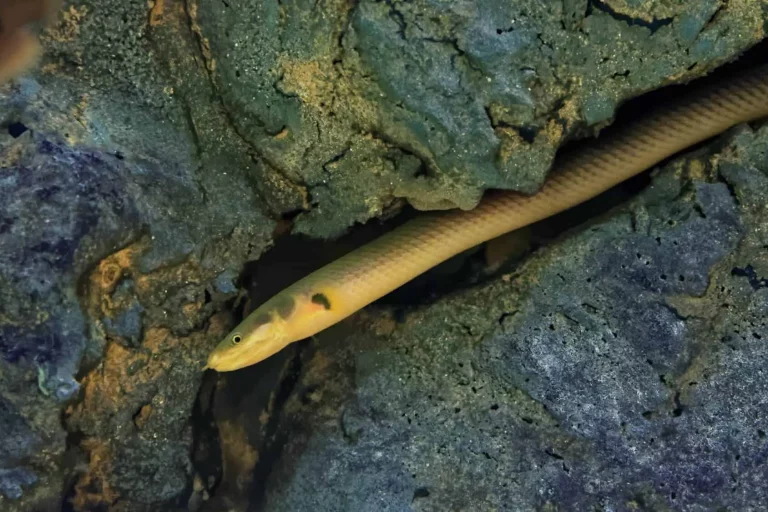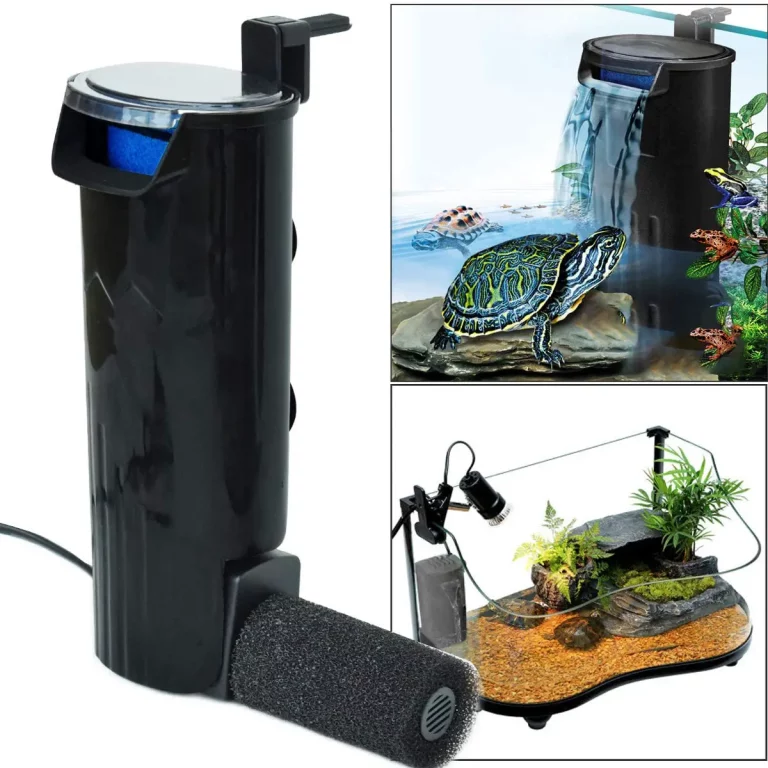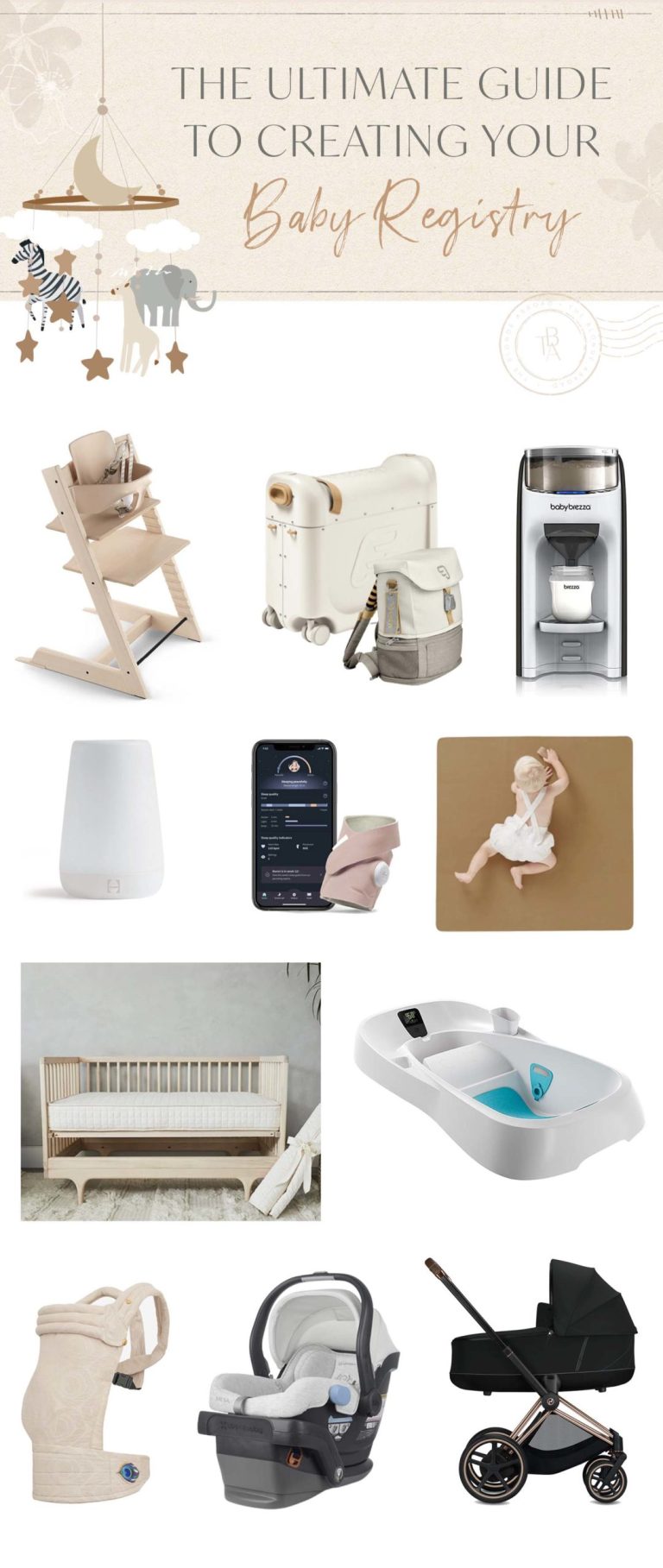Why Do My Plecos Keep Dying? Troubleshooting Tips to Save Your Fish
Plecos may be dying due to poor water conditions or lack of food. It is important to ensure proper care and attention is given to the plecos in order to maintain their health and well-being.
If you’re an aquarium hobbyist, having plecos in your tank can add to the overall appeal and interest. However, if you notice your plecos are consistently dying, you may be at a loss as to what’s happening. Possible reasons for their death include poor water quality, inadequate feeding, overcrowding, or stress.
It’s crucial to pay attention to water conditions by regularly testing and changing the water. Ensuring they have enough food and a clean environment can prevent future deaths and help your plecos thrive.

Credit: www.youtube.com
Common Reasons Why Plecos Die
Plecos, also known as suckerfish, are a popular addition to many aquarists’ tanks for their unique appearance and ability to keep the tank clean. However, despite their hardy nature, plecos can still fall prey to various environmental stressors that can lead to their untimely demise.
In this section, we will discuss some of the common reasons why plecos die and how to prevent them from occurring.
Overcrowding The Tank And Associated Problems
Overcrowding is one of the most common reasons why plecos die. When there are too many fish in one tank, it leads to an increase in waste production, which results in poor water quality. This, in turn, can lead to various health issues for your plecos, including diseases and infections.
To prevent overcrowding in your tank, you should follow the general rule of thumb, which is to have one gallon of water per inch of fish.
Here are some other associated problems with overcrowding:
- Increased aggression and territorial behavior among plecos
- Oxygen depletion due to the increased demand from overcrowded fish
- Difficulty in maintaining stable water parameters
Insufficient Oxygen Levels In The Tank
Another common reason why plecos die is due to a lack of oxygen in the tank. Plecos require a well-aerated and oxygen-rich environment to thrive. Without adequate oxygen levels, plecos may experience respiratory distress, which can lead to stress and ultimately death.
Signs of low oxygen levels include gasping for air, lethargy, and loss of appetite.
Here are some ways to ensure your plecos get enough oxygen:
- Install an air pump and air stone to increase surface agitation and aeration
- Avoid overstocking the tank, as overcrowding creates competition for oxygen
- Regularly clean the tank and filter to ensure proper circulation
Unclean Water And Water Chemistry Issues
Maintaining water quality is crucial to the health and survival of your plecos. Poor water quality can lead to various health issues, including bacterial and fungal infections, fin rot, and even death. The following are some common water chemistry issues that may lead to adverse health effects:
- High levels of ammonia and nitrites
- Low ph levels
- High nitrate levels
To prevent water chemistry problems, you should:
- Regularly test your water parameters and perform water changes as needed
- Avoid overfeeding your plecos, which can lead to an increase in waste production
- Keep the tank clean and free of debris
Inadequate Diet And Malnutrition
A well-balanced and nutritious diet is essential to maintain the health of your plecos. Inadequate or improper nutrition can lead to various health concerns, including malnutrition, stunted growth, and weakened immune systems. Plecos are herbivores and need a diet rich in fiber and plant matter.
Here are some tips for maintaining a healthy diet for your plecos:
- Feed them algae-based pellets or wafers that are rich in fiber
- Offer fresh vegetables, such as spinach and zucchini, as a treat
- Avoid overfeeding and provide only what they can consume in a few minutes
Poor Handling And Transport Of The Pleco
Lastly, poor handling and transport of plecos can lead to stress and even death. When moving your plecos, you should be careful to avoid damaging their delicate fins and skin. You should also take precautions to ensure that they have enough oxygen and are in a stress-free environment during transport.
Here are some tips to ensure a safe and stress-free transport:
- Use a fishnet to scoop them up gently
- Place them in a small bucket or container filled with fresh, conditioned water
- Cover the container to keep the plecos in a dark and stress-free environment
Plecos can be a great addition to your tank, but they require proper care to thrive. By avoiding overcrowding, maintaining good water quality, providing a healthy diet, and taking care during transport, you can help prevent your plecos from falling prey to the common reasons why they die.
How To Prevent Overcrowding In Your Tank
Determining The Right Number Of Plecos For Your Tank
Are you wondering why your plecos keep dying? It may be an issue of overcrowding. Determining the right number of plecos for your tank is essential to maintain their health and happiness. Here are some key points to consider:
- Plecos are territorial fish and require adequate space to establish their territory.
- The general rule of thumb is to allocate a minimum of 20 gallons of water per pleco.
- Take into account your tank’s filtration capacity and other fish species also living in the tank.
Understanding Each Pleco’S Space Requirements
Not all plecos are created equal. Some species require more space than others. Here are some space requirements to keep in mind when selecting your plecos:
- Common plecos can grow up to 2 feet long! These fish require at least a 100-gallon tank.
- Bristlenose plecos are smaller in size, and a minimum 30-gallon tank is sufficient for two of them.
- Clown plecos prefer to have a place to hide and require a minimum of 20 gallons per fish.
Signs And Symptoms Of An Overcrowded Tank
Overcrowding in your tank can lead to various health problems for your fish. Here are some signs to look out for:
- Fish gasping for air at the surface of the tank
- Elevated levels of ammonia or nitrite in the water
- Increased aggressive behavior among fish
- Poor and stunted growth of your plecos
What To Do If Your Tank Is Already Overcrowded
If you notice signs of overcrowding in your pleco tank, it’s important to act fast to prevent any health problems. Here are some steps to take:
- Evaluate the number of fish currently living in the tank and compare it to the size of your tank. Remove any excess plecos or other fish species that may not be compatible with your plecos.
- Consider upgrading to a larger tank to accommodate your plecos’ space requirements.
- Check the filtration capacity of your tank and consider adding additional filtration systems.
- Regularly monitor water quality and perform water changes as needed to maintain a healthy environment for your plecos.
Overcrowding can be a major problem for your plecos. By determining the right number of plecos for your tank, understanding each pleco’s space requirements, and identifying signs of overcrowding, you can prevent health issues and ensure the happiness of your plecos.
Maintaining High Oxygen Levels In Your Tank
Importance Of Oxygen In The Tank And Plecos’ Health
Sufficient oxygen levels are essential for the survival of plecos and other aquatic creatures in your tank. Oxygen is necessary for respiration, metabolism, and overall growth. Insufficient oxygen limits the growth of beneficial bacteria and can cause stress to your plecos, leading to poor health and even death.
Measures To Improve Oxygen Levels In The Tank
Here are some measures to consider to improve oxygen levels in your tank:
- Increase water circulation with a powerhead, air stones, or a filter.
- Increase surface agitation by adding a bubble wand or lowering the water level.
- Perform routine water changes, as poor water quality can result in lower oxygen levels.
- Control feeding amounts to avoid excess waste in the tank.
Factors Affecting Oxygenation Of The Tank
Several factors can affect your tank’s oxygen levels, including:
- Fish population: Overcrowding your tank with fish can decrease available oxygen.
- Temperature: Warmer water temperatures reduce the amount of oxygen fish can absorb.
- Plant life: Having live plants in your aquarium can increase oxygen levels.
- Water agitation: Moving water increases surface area and helps to oxygenate the water.
Proactive Steps To Keep Oxygen Levels Optimal
To maintain optimal oxygen levels, follow these proactive steps:
- Regularly check your tank’s oxygen levels with a test kit.
- Keep your tank clean to prevent the buildup of excess waste and debris.
- Avoid overfeeding your plecos, as excess food can lead to an increase in waste and decreased oxygen levels.
- Properly size your filter for your tank size.
- Consider using aeration equipment like an air pump or diffuser.
By understanding the importance of oxygen in the tank and taking proactive steps to maintain high oxygen levels, you can create a healthy environment for your plecos.
Keeping Your Tank Water Clean
Plecos, also known as suckerfish or algae eaters, are popular freshwater fish often kept in aquariums. They can be a great addition to any aquarium, but if they keep dying, there could be issues with the tank’s water quality. In this section, we’ll explore the link between water quality and plecos’ health, causes of dirty water and solutions to address them, managing the ph balance in the tank, and regular water-changing routines and frequency.
The Link Between Water Quality And Plecos’ Health
The health of plecos is heavily dependent on the quality of the water in their tank. Poor water quality can lead to a range of issues, including diseases that can be fatal to fish. To ensure a healthy environment for plecos, maintaining clean water is necessary.
Here are some points to consider:
- Dirty water can affect the levels of oxygen in the tank, which can cause suffocation and death.
- The accumulation of waste and uneaten food in water allows bacteria and parasites to grow leading to diseases in fish.
- Unclean water can also lead to the production of ammonia, nitrate, and nitrite, which can be very toxic to plecos.
Causes Of Dirty Water And Solutions To Address Them
Dirty water is one of the primary reasons plecos die in aquariums. Here are some causes of dirty water and solutions to address them:
- Overfeeding causes uneaten food to rot and produce toxins that can harm plecos. A solution to overfeeding would be to provide less food or feed them twice only daily and ensure that they eat everything before another feeding time.
- Biological waste, such as fish excrement and leftover food, accumulates over time leading to poor water quality. This issue is prevented by a regular cleaning routine.
- Faulty filtration systems can cause water quality to decline over time. It’s important to remember that filters need cleaning and replacement periodically.
- Dead plants and debris can pollute the water. To avoid, remove any dead or rotting plants and any debris regularly.
Managing The Ph Balance In The Tank
Maintaining a balanced ph level in the tank can make a significant difference in the overall well-being of a pleco. If the water’s ph level is unbalanced, the fish may experience stress and eventually die. Here’s what you need to know:
- The optimal ph level for a pleco tank should be between 7.0 and 8.0.
- Regular use of ph testing kits will allow you to know your tank’s ph levels quickly and easily. Use a ph adjusting product to maintain the right ph level if necessary.
Regular Water-Changing Routines And Frequency
Regular water changes are necessary to maintain good water quality for plecos. As mentioned earlier, the accumulation of waste and biological matter over time can lead to toxic growth in water, which deteriorates fish health. Here are some key points:
- Maintain a schedule of water changes, which should be done at least once a week.
- Make sure that 20-30% of the water is changed every time.
- Use a water siphon to remove residue from the gravel and other decorations to maintain a healthy environment.
By following these water-cleaning practices, plecos can live in a healthy and clean environment.
The Right Diet And Nutrition For Your Plecos
Pleco’S Dietary Requirements And The Most Suitable Foods
Proper diet and nutrition are essential for keeping your plecos healthy. Plecos require a varied diet that mimics their natural food sources in the wild. Some of the best foods for your plecos include:
- Algae wafers
- Vegetables such as cucumbers, spinach, zucchini, and lettuce
- Fruits (sparingly) such as watermelon and melon
- Protein-rich foods such as shrimp, krill, and bloodworms
These foods provide essential nutrients that your plecos need, such as protein, fiber, vitamins, and minerals. Be sure to feed your plecos a balanced diet that contains a variety of these foods.
Supplements To Support A Balanced And Healthy Diet
In addition to a balanced diet, your plecos may benefit from supplements such as calcium and vitamin c. calcium supplements can help prevent bone disease in your plecos, while vitamin c can boost their immune system. These supplements should be given in moderation, and it’s important to consult with a vet or an expert before adding any new supplements to your plecos’ diet.
Feeding Frequency And Portion Control
Feeding your plecos too much or too often can lead to health issues such as obesity and digestive problems. It’s recommended to feed your plecos once a day, with portion sizes based on their age and size. As a rule of thumb, feed your plecos an amount of food that they can eat within 2-3 minutes.
Overfeeding can be harmful to your plecos’ health and can also lead to water quality issues in your aquarium.
Signs Of Malnutrition And How To Correct Them
Signs of malnutrition in plecos can include weight loss, lethargy, and a dull or discolored appearance. If you notice any of these signs, it’s important to adjust your plecos’ diet to ensure they are getting the right nutrition. You may need to add more vegetables or protein-rich foods to their diet, or consider adding supplements.
Consulting with an expert or a vet can help you determine the best course of action for your plecos. A healthy and balanced diet is essential for your plecos’ overall health and well-being. By following these suggestions, you can provide your plecos with the nutrients they need to thrive and prevent health issues from arising.
Transport And Handling Of Your Plecos
Safe Transportation Of Plecos
Transportation can be a stressful experience for any fish, including your plecos. In order to guarantee the safe arrival of your fish, here are some tips to follow:
- Use a sturdy, clean, and spacious container to transfer your plecos.
- Cover the container with a lid to prevent your plecos from jumping out or injuring themselves.
- Do not overcrowd the container. Make sure there is enough space to allow them to move around comfortably.
- Avoid exposing your plecos to extreme temperatures, whether it is hot or cold.
- Keep the container in a dark place to reduce stress on your fish.
Proper Handling Techniques To Avoid Injuries And Stress
Handling plecos requires extra care and attention to avoid causing them injuries and stress. Use the following techniques to ensure safe handling:
- Use a soft net to catch them. Avoid using your hands or hard tools as they can damage the fish’s scales and fins.
- Keep your hands wet before handling. Dry hands can remove the fish’s protective mucus coating.
- Hold your fish gently and securely to avoid slipping out of your grip.
- Do not leave your fish out of water for too long.
- Minimize any sudden movements as they can cause stress to your fish.
Quarantine Procedures Before Releasing Plecos Into The Tank
Before introducing your plecos to the main tank, it is essential to conduct a quarantine process to prevent the spread of diseases. Here are some steps to follow:
- Isolate your newly acquired plecos in a separate tank for at least 2 weeks.
- Observe their behavior and monitor for any signs of diseases.
- Do not feed them with any fish food that has not been previously introduced to the main tank.
- Perform frequent water changes to maintain a healthy environment for your fish.
Monitoring For Signs Of Decay Or Disease After Transportation
Your plecos may be at higher risk of developing diseases after transportation due to the stress they experienced. It is crucial to monitor them closely to prevent any outbreaks. Here are some signs to watch out for:
- Lethargic behavior, such as floating on their side or staying at the bottom of the tank.
- Loss of appetite or disinterest in food.
- Abnormal swimming behavior, such as swimming backwards or erratically.
- Visible signs of decay or physical injuries, such as white or black spots, or torn fins.
By following these recommended handling, transportation, and quarantine processes, you can help ensure the health and wellbeing of your plecos, keeping them happy and disease-free for years to come.
Frequently Asked Questions For Why Do My Plecos Keep Dying
Why Do My Plecos Keep Dying Due To Overfeeding?
Overfeeding can lead to digestive problems and ammonia overload in water, which can harm plecos.
What Leads To Plecos Being Stressed And Ultimately Dying?
Plecos can become stressed due to poor water quality, inadequate tank size, aggressive tankmates, and changes in their environment.
How Can I Ensure The Ideal Living Conditions For Plecos?
Maintaining proper water quality, providing adequate tank size, offering a balanced diet, and creating a suitable environment can ensure ideal living conditions for plecos.
What Diseases And Illnesses Are Common In Plecos?
Common illnesses in plecos include fin and tail rot, bacterial infections, and parasitic infestations. Regular water changes and tank maintenance can prevent these.
Conclusion
After analyzing why your plecos keep dying, we can conclude that there are multiple factors that could be causing this issue. The most common reasons are poor water quality, inadequate diet, aggressive tank mates, and a lack of suitable hiding places.
To prevent such incidents, it is necessary to keep a close eye on the water parameters and maintain a healthy environment for your fish. Add a variety of fresh, nutritious food to their diet, and avoid pairing them with aggressive or predatory species.
Keep them happy and stress-free by providing suitable hiding places and an adequate amount of space to swim. Taking these precautions can significantly reduce the chances of losing your plecos. Remember, being a responsible fish keeper not only ensures the longevity and growth of your pets, but also helps preserve their species for years to come.

